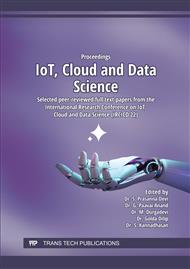p.772
p.782
p.789
p.797
p.809
p.817
p.828
p.836
p.844
Fog Offloading and Scheduling in Traffic Monitoring System by Deep Reinforcement
Abstract:
Innovative environments such as fog computing, which offer computation, data management, and other applications at the network edge, are gaining prominence. Fog networks with Wi-Fi offloading determined to be among the most acceptable methods for combating significant data increases in cellular networks. Fog nodes used to relay traffic and computations are situated nearby, making them excellent relay points. So, why networks have grown as rapidly as they have, and it's left its imprint on their performance. On the other hand, fog computing has recently developed to help Content-Centric Networking (CCN) decrease the amount of traffic. It has shown to be an effective method to reduce network latency and process time in industries and traffic. The use of Vehicle to Device technology for transferring network data in the mobile environment is expected to take off, particularly for autonomous cars. This study considers how to balance energy usage and service delay while allocating mobile traffic among vehicle networks. This article proposes a new paradigm for describing users' desire to provide their mobile vehicle resources to the public. The suggested methods are evaluated via comprehensive simulations, using various mobile movement traces. Additionally, Deep learning algorithm with how an online traffic monitoring for training and how important it is to know that train is possible. In conclusion, this methods proved to be better than previous benchmark techniques for fog networks.
Info:
Periodical:
Pages:
809-816
Citation:
Online since:
February 2023
Authors:
Keywords:
Price:
Сopyright:
© 2023 Trans Tech Publications Ltd. All Rights Reserved
Share:
Citation:


